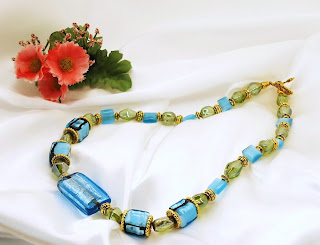 |
| © creativecommons / dreamstime.com |
Happy Holidays, everyone! Another year closing down, with plenty of time for reflection, celebration, and even a little joy. We can do it!
Around this time of year I always like to make a list of my most exciting or interesting highlights, the things that made the year special and/or memorable in some significant way. 2021 may still have been a difficult year to navigate, but there were definitely lighter moments, more feelings of optimism, and more opportunities to socialize than we had in 2020. Throughout it all, the one thing I truly learned was that we can always look for the silver lining, no matter what, and the following list comprises my own, personal top twelve:
1. I finished my work-in-progress novel, Ghazal. This was a big deal, I can tell you! What started out several years ago as a NaNoWriMo exercise took over my imagination and wouldn't let me go. I had to know more about my characters and their stories, and here we are today: a whole, finished manuscript.
2. In October I opened my first Etsy shop selling my handmade beaded necklaces, earrings, and bracelets. You can see them all by clicking here. Come on over and let me know what you think!
3. I got the chance to see some good friends again. After months and months of isolation, it was a major event to meet up in a cafe and share our various creative projects and plans while eating some great food. Just like we did in the "old days."
4. Albuquerque Urban Sketchers took the plunge and resumed their monthly meetings. I wasn't able to attend all of the outings, but the ones I got to participate in were both educational and inspiring.
5. Spring brought the opportunity to attend a Frida Kahlo exhibition at the Albuquerque Museum. It was great to rejoin the world through history and culture. And of course the artwork was spectacular.
6. I started work on two new book ideas. One is a mystery, the other is a historical Southern Gothic. Currently they are both messy first drafts that only make sense to me (sort of) but they will be interesting projects to carry with me into the new year.
7. My local library became so overloaded with donations they had a massive sale that continued for most of the summer. 50% off books that were originally priced at no more than one to two dollars each meant I got an entirely new shelf of excellent art books.
8. I signed up for and took several more Domestika online art classes. One of my absolute favorites was about starting and maintaining a sketchbook practice taught by artist Sorie Kim.
9. And thanks to Sorie I filled several sketchbooks this year, exploring many new ideas, mediums, and subjects. Who knew I liked to draw frogs and lizards so much?
10. Which then led me to buy professional watercolors for the first time ever. I tried two different brands and with completely different results. It was an interesting experiment as I had no idea high quality paints could vary so wildly from brand to brand. In the end I had to discard one as being absolutely horrible: the colors faded into the page, no juicy life or sparkle, just very disappointing to use. On the other hand, my second brand, Winsor and Newton, gave me everything I was looking for: strong and vivid color from the first layer and a "brightness" that encouraged me to keep painting.
11. This might sound a bit desperate, but in July when we were able to go mask-free for a few weeks I got a professional haircut at a genuinely fancy-pantsy salon. At the time I went it was my first cut in over 18 months and it was a true joy. Due to renewed restrictions I haven't been back since, but it makes a nice memory. I'm sure to go back one day!
12. Caved and subscribed to Netflix. I'm still undecided on how good a move this was, but with my local movie theater having closed down permanently and not much else happening in town, TV is a welcome relief after a day of work, writing, and sketch-booking. There have certainly been some good series and films (amongst a sea of questionable others) and it was fun to not be the only kid on the block who didn't know what Squid Game was. Television, for all its faults and propaganda, can certainly be a comforting way to unite with distant friends, family, as well as total strangers and I was glad to take part.
In between all of these highlights there were of course plenty of simple but wonderful days painting on my balcony, enjoying a cup of tea, and walking through my amazing neighborhood. It may have taken a bit of digging, but there was always something meaningful and unforgettable to be found, each and every day. It was a year well spent.
Tip of the Day: The next time you find yourself seated by the fire or just beside a frosty window, be sure to have your pen and journal with you. Take some time to record and consider what made 2021 a year to remember; the highs, the lows, the things that made the year unique. I hope you'll discover there were many more moments of joy than you may have realized at first and that you'll be motivated to keep creating more.
Wishing you all a brilliant 2022!













